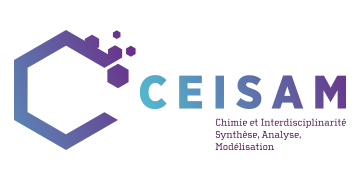Le Professeur INN Namboothiri de l’Institut de Technologie de Bombay donnera une conférence le Lundi 12 juin 2023 en salle Marie-Curie à 10h00 dans le domaine de la catalyse asymétrique et de la synthèse multi-étape. Le Professeur INN Namboothiri est un chimiste organicien tout-terrain travaillant dans des domaines variés tel que la synthèse de molécules bioactives, l’élucidation de mécanismes réactionnels ou l’étude de matériaux de haute énergie.
Catalytic Asymmetric Synthesis of Multi-functional and Bioactive Molecules
Department of Chemistry, Indian Institute of Technology Bombay, Mumbai 400 076, irishi@iitb.ac.in
Asymmetric catalysis is superior to classical resolution and chiron/auxiliary approaches and is currently reaching the level of mimicking biological processes. Asymmetric organocatalysis, viz. performing organic reactions under the catalytic influence of small chiral organic molecules, in particular, has developed in the last twenty years as a powerful alternative to metal and enzyme mediated reactions. These reactions do not require anhydrous and anaerobic medium and often proceed under mild and environmentally friendly conditions in the presence of substoichiometric amounts of chiral organocatalysts. Various multi-component and cascade reactions are now efficiently catalyzed by small, simple, chiral organic molecules.
The term organocatalysis was coined by Mac Millan and along with him Barbas, List and many others have pioneered this area since the year 2000. Historically, asymmetric organocatalysis began when Bredig performed addition of HCN to benzaldehyde in the presence of quinine/quinidine to afford the product in less than 10% ee. Proline catalysed synthesis of Wieland-Miescher ketone was reported in the 1970’s. However, the mechanism of these reactions was poorly understood until the year 2000. Now different activation modes of covalent catalysis and non-covalent catalysis are clearly recognized. Selected applications of asymmetric organocatalysis in the synthesis of complex molecules reported from our laboratory will be discussed in this lecture.
Since aminophosphonate moiety mimics the tetrahedral transition state of carboxylate in peptide bond hydrolysis, catalytic asymmetric approaches to synthesis of aminophosphonates, aminosulfones and aminocarboxylates, bearing a tetrasubstituted α-chiral center, has been achieved in our laboratory via Michael addition of various phosphonates, sulfones and esters to electron deficient alkenes in the presence of chiral thiourea and squaramide organocatalysts. Asymmetric synthesis of aminosulfones is also of considerable interest because sulfone is an easily amenable functional group and many sulfone-based drugs are currently available in the market. Asymmetric synthesis of highly functionalized compounds by treating various 1,3-dicarbonyl compounds with nitroalkenes and alkylideneoxindoles will also be discussed.
Selected References
[1] K. Bera and I. N. N. Namboothiri, Org. Lett. 2012, 14, 980.
[2] K. Bera and I. N. N. Namboothiri, Adv. Synth. Catal. 2013, 355, 1265.
[3] K. Bera and I. N. N. Namboothiri, Chem. Commun. 2013, 49, 10632.
[4] Review: K. Bera, D. Nadkarni and I. N. N. Namboothiri, J. Chem. Sci. 2013, 125, 443.
[5] K. Bera and I. N. N. Namboothiri, Org. Biomol. Chem. 2014, 12, 6425.
[6] Review: K. Bera and I. N. N. Namboothiri, Asian J. Org. Chem. 2014, 3, 1234.
[7] D. K. Nair, R. F. S. Menna-Barreto, E. N. da Silva Júnior, S. M. Mobin and I. N. N. Namboothiri, Chem. Commun. 2014, 50, 6973.
[8]K. Bera and I. N. N. Namboothiri, J. Org. Chem. 2015, 80, 1402.
[9] K. Bera and N. S. Satam and I. N. N.Namboothiri, J. Org. Chem. 2016, 81, 5670.
[10] K. Bera, N. Ayyagari, N. S. Satam and I. N. N.Namboothiri, Org. Biomol. Chem. 2020, 18, 140.
[11] B. Laha, A. Suresh and I. N. N. Namboothiri, Org. Biomol. Chem. 2023, 21, 1872.
[12] C. S. Sankara, S. Bhagat, A. Chandra and I. N. N. Namboothiri, Eur. J. Org. Chem. 2023, e202300069.
Contact : François-Xavier FELPIN

